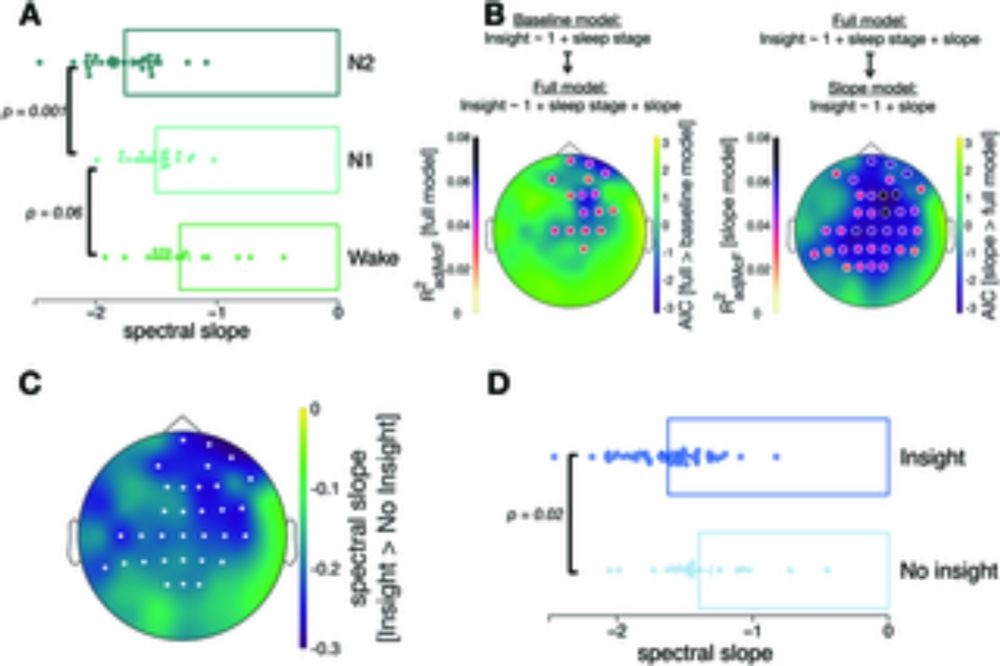
We compare humans and neural networks in a learning task, showing how training regime and task similarity interact to drive transfer or interference.
www.biorxiv.org/content/10.1...
“Competing Neural Decision Variables in Human Frontal Cortex Shape Decision Confidence”
by Alessandro Toso, @ayeletarazi.bsky.social, @jrochav.bsky.social, @ktsetsos.bsky.social & Tobias H. Donner
🔗 www.biorxiv.org/content/10.1...

“Competing Neural Decision Variables in Human Frontal Cortex Shape Decision Confidence”
by Alessandro Toso, @ayeletarazi.bsky.social, @jrochav.bsky.social, @ktsetsos.bsky.social & Tobias H. Donner
🔗 www.biorxiv.org/content/10.1...
Work with @summerfieldlab.bsky.social, @tsonj.bsky.social, Lukas Braun and Jan Grohn
www.nature.com/articles/s41...
Work with @summerfieldlab.bsky.social, @tsonj.bsky.social, Lukas Braun and Jan Grohn
www.nature.com/articles/s41...
New research finds both shared and unique patterns in how stimulus properties, recognised emotion, and perceived intensity jointly shape how we see facial emotions.
doi.org/10.1080/0269...
@psplabatuea.bsky.social

New research finds both shared and unique patterns in how stimulus properties, recognised emotion, and perceived intensity jointly shape how we see facial emotions.
doi.org/10.1080/0269...
@psplabatuea.bsky.social
"Observer and stimulus factors jointly shape perceptual similarity of static and dynamic facial emotions"
doi.org/10.1080/0269...

"Observer and stimulus factors jointly shape perceptual similarity of static and dynamic facial emotions"
doi.org/10.1080/0269...
In this new preprint, we found that the hippocampus sequentially inverts the behaviorally relevant dimensions of similarity 🧵
www.biorxiv.org/content/10.1...

In this new preprint, we found that the hippocampus sequentially inverts the behaviorally relevant dimensions of similarity 🧵
www.biorxiv.org/content/10.1...
www.biorxiv.org/content/10.1...

www.biorxiv.org/content/10.1...
onlinelibrary.wiley.com/doi/10.1111/...
@zacndr.bsky.social @teamlabuda.bsky.social @fraferri.bsky.social @danlikesbrains.bsky.social
onlinelibrary.wiley.com/doi/10.1111/...
@zacndr.bsky.social @teamlabuda.bsky.social @fraferri.bsky.social @danlikesbrains.bsky.social
We compare humans and neural networks in a learning task, showing how training regime and task similarity interact to drive transfer or interference.
www.biorxiv.org/content/10.1...

We compare humans and neural networks in a learning task, showing how training regime and task similarity interact to drive transfer or interference.
www.biorxiv.org/content/10.1...
psycnet.apa.org/fulltext/202...

psycnet.apa.org/fulltext/202...
@doellerlab.bsky.social
www.biorxiv.org/content/10.1...

@doellerlab.bsky.social
www.biorxiv.org/content/10.1...
#compneuro #neuroskyence
www.pnas.org/doi/10.1073/...

#compneuro #neuroskyence
www.pnas.org/doi/10.1073/...
If you’re interested in motor control, incentives, and brain oscillations, we have new results to share.
Together, they reveal how feedback and motivation shape behavior, and how brain rhythms help keep our force stable.
If you’re interested in motor control, incentives, and brain oscillations, we have new results to share.
Together, they reveal how feedback and motivation shape behavior, and how brain rhythms help keep our force stable.
@keckjanis.bsky.social,Viktor Studenyak,Daniel Schad,Aleksandr Shpilevoi. Huge thanks to @andrejbicanski.bsky.social and @doellerlab.bsky.social for support. Report: arxiv.org/abs/2507.17958

@keckjanis.bsky.social,Viktor Studenyak,Daniel Schad,Aleksandr Shpilevoi. Huge thanks to @andrejbicanski.bsky.social and @doellerlab.bsky.social for support. Report: arxiv.org/abs/2507.17958
At first, what we found was very confusing!
But when we dug in, it revealed a fascinating neural strategy for how we switch between tasks
doi.org/10.1101/2024.09.29.615736
🧵
At first, what we found was very confusing!
But when we dug in, it revealed a fascinating neural strategy for how we switch between tasks
doi.org/10.1101/2024.09.29.615736
🧵
How does respiration influence (un-)predictable near-threshold perception? MEG, arousal modulation, excitability states, respiration phase-resolved connectivity changes - it's all there :)
#neuroskyence
www.biorxiv.org/content/10.1...

How does respiration influence (un-)predictable near-threshold perception? MEG, arousal modulation, excitability states, respiration phase-resolved connectivity changes - it's all there :)
#neuroskyence
www.biorxiv.org/content/10.1...
We (again) found evidence against a memory benefit of spatial novelty. However, this time we did find a retroactive benefit of rest, which highlights that more work is needed here.
journals.sagepub.com/doi/full/10....


We (again) found evidence against a memory benefit of spatial novelty. However, this time we did find a retroactive benefit of rest, which highlights that more work is needed here.
journals.sagepub.com/doi/full/10....
#compneuro #psychscisky

#compneuro #psychscisky
The result of my MSc thesis is out with @kayson.bsky.social @fatemehhadaeghi.bsky.social @patrickmineault.bsky.social @kordinglab.bsky.social, Claus C. Hilgetag

The result of my MSc thesis is out with @kayson.bsky.social @fatemehhadaeghi.bsky.social @patrickmineault.bsky.social @kordinglab.bsky.social, Claus C. Hilgetag
Work done together with @doellerlab.bsky.social, @caswell.bsky.social and Juergen Jost.
doi.org/10.1371/jour...
#neuroskyence #compneurosky
1/n

Work done together with @doellerlab.bsky.social, @caswell.bsky.social and Juergen Jost.
doi.org/10.1371/jour...
#neuroskyence #compneurosky
1/n
Together with amazing people:
@barnaveliirina.bsky.social
@lukaskunz.bsky.social @mirkothm.bsky.social
and Andrea Greve
Together with amazing people:
@barnaveliirina.bsky.social
@lukaskunz.bsky.social @mirkothm.bsky.social
and Andrea Greve
1/ Can we accurately detect sequential replay in humans using Temporally Delayed Linear Modelling (#TDLM)? In our recent study, we could not find any replay and decided to dig deeper by running a hybrid simulation with surprising results. Link to preprint & details below 👇
1/ Can we accurately detect sequential replay in humans using Temporally Delayed Linear Modelling (#TDLM)? In our recent study, we could not find any replay and decided to dig deeper by running a hybrid simulation with surprising results. Link to preprint & details below 👇
Here is a small something I quickly cooked up because I was curious myself.
#neurosky #neuro #brain #brainsky #neuroimaging
Code: github.com/JAQuent/netw...

Here is a small something I quickly cooked up because I was curious myself.
#neurosky #neuro #brain #brainsky #neuroimaging
Code: github.com/JAQuent/netw...
🔗 www.biorxiv.org/cgi/content/...

🔗 www.biorxiv.org/cgi/content/...
Accompanied by an insight piece by @neurojacob.bsky.social 📄: elifesciences.org/articles/106...
1/4

Accompanied by an insight piece by @neurojacob.bsky.social 📄: elifesciences.org/articles/106...
1/4

